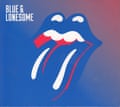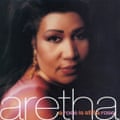Bob Dylan – Rough and Rowdy Ways (2020)

For a time, it looked as if Dylan might be settling into the gentle downstream of American Songbook and pop standards, releasing three such covers albums in the late 2010s. Then, in 2020, he unleashed this masterpiece. Peculiar, poetic and largely preoccupied with the purpose of art, its 10 tracks seemed not just original songs but strikingly original thoughts. The record’s lead single was Murder Most Foul, which rolled in at 16 minutes and 54 seconds, enlisted Fiona Apple and Blake Mills, and considered the assassination of JFK in the broader setting of US political and cultural history. It was audacious and wonderful.
None of the record’s other tracks touched such magnitude, but they maintained the lyrical complexity and precision, and frequent references to other works, from Warren Zevon to Walt Whitman, via Charlie Poole, Mary Shelley and the ancient Roman poet Juvenal. They embraced acoustic folk, electric blues, and a vocal that seemed variously composed of tar and resin, barnacles and sun-bleach; the sound, perhaps, of time itself. LB
The Rolling Stones – Blue & Lonesome (2016)

It is tempting to nominate 1983’s Undercover as the great Stones album of their later years – not perfect, but experimental and committed. And while artistically it plainly is a late Stones album, chronologically it comes from the first third of their career. Does that now make it an early Stones album? Instead, try Blue and Lonesome, the rare Stones album since Some Girls to merit the oft-repeated claim of being “their best since Some Girls”.
Blue and Lonesome was the back-to-their-roots album, 12 old blues numbers, recorded over three days in London, with minimal fripperies. It is raw, rattling and exciting, an album that sounds like musicians playing for each other rather than trying to make a record to give them an excuse to tour again. Mick Jagger’s harmonica playing throughout is fantastic, and the whole thing serves as a fitting epitaph for Charlie Watts, whose drumming gives Blue and Lonesome its swing. MH
Aretha Franklin – A Rose Is Still a Rose (1998)

Hip-hop is not a genre you would immediately associate with Aretha Franklin. By 1998, the 56-year-old diva had released more than 30 albums, defining the 20th-century sound of soul, R&B and gospel. But before the new millennium arrived she decided to switch into an unexpected and exciting new direction. Franklin’s 34th record, A Rose Is Still a Rose, is a late-career reinvention featuring hip-hop producers Jermaine Dupri and Daryl Simmons, as well as vocalist Lauryn Hill, exploring boom bap rhythms, sultry R&B and Mariah Carey-referencing anthems across its 11 tracks.
Highlights include the sweeping orchestral strings and thumping programmed drums of the opening title track, a sample of Carey’s 1995 hit Fantasy on Here We Go Again, and the bass-driven funk of Watch My Back. Franklin’s voice is in typically belting form, soaring seamlessly over the contemporary productions and proving its timeless tone. AK
Willie Nelson – God’s Problem Child (2017)

Age has not slowed Willie Nelson across the 21st century and he continues to release albums at a rapid clip. This noted, these tend to be tributes to favourite singers (or duets) – pleasant but inessential.
But God’s Problem Child, released to coincide with his 84th birthday, found Willie raising his game by focusing on mortality. The seven Nelson originals here are largely celebrations of a life well lived: on Still Not Dead he laughs at reports of his death, It Gets Easier is a hymn to the simple pleasures ageing allows, while Delete and Fast Forward is a rocking rejection of Donald Trump’s then recent victory. He Won’t Ever Be Gone is a moving tribute to Merle Haggard (the country singer who died in 2016) while the title song is a blues-soaked meditation on a life flawed yet blessed. Throughout this outstanding album Nelson sings with exquisite grace. GC
Donna Summer – Another Place and Time (1989)

Their quiffed prince was Rick Astley, their shiny princess clearly Kylie, but the late 1980s empire of Stock Aitken Waterman needed a queen. Enter Donna Summer. Another Place and Time came about after Summer’s husband, Bruce Sudano, met Pete Waterman by chance in LA; Sudano thought the Brits could add commercial oomph to his wife’s career, which was badly flagging after her 70s disco peak.
The production house’s crunchy synths and tinny drums do date these 10 tracks, but Summer’s brilliant voice transports them somewhere seductive. She nails power-ballad tenderness on the title track, the switch from drama to hands-in-the-air hi-NRG on Love’s About to Change My Heart, and polishes the Balearic shimmer of Breakaway. She also skyrockets the already excellent single This Time I Know It’s for Real, her first Top 5 UK hit since No More Tears (Enough Is Enough) with Barbra Streisand, released a decade before. JR
Stevie Wonder – Jungle Fever (1991)

Stevie Wonder displayed little interest in competing with his unmatchable 70s hot streak over the decade that followed, focusing instead on extracurricular activities such as making Martin Luther King Day a national holiday, and procrastinating over the few albums he delivered. But maybe the non-negotiable deadline of composing the soundtrack to Spike Lee’s interracial romance focused his mind, as it proved his strongest album since 1980’s Hotter Than July.
The haunting I Go Sailing re-conjured the exquisite melancholia of 1974’s Fulfillingness’ First Finale, while the playful If She Breaks Your Heart was classic Motown robed in modernist technology, and Queen in the Black was a lustful, danceable act of worship. And the robust, restless future-funk of At Each Other’s Throat and the title track easily held their own against the then reigning new jack swing of Jam & Lewis et al, the old master reminding the young pretenders he invented this game, and played it best. SC
after newsletter promotion
The Fall – The Real New Fall LP (Formerly Country on the Click) (2003)

After their 80s imperial period gave way to a dissolute 90s, Fall-watchers feared that Mark E Smith’s epoch of avant-garage ringmastery was ending. But as Smith sneers here, “it’s only humans that carry their past around”. Smith was never a man for nostalgia; few musical figures have matched his capacity for regeneration. Still, he understood the fundamentals and at first, this is what you hear – the Cro-Magnon thump of Mountain Energei is a restatement of intent.
But from there, the album gets wider and wilder in scope. There are kosmische-punk epics, wistful folkish detours and mischievous sound experiments. There are lyrical dissections of everything from ageing football hooligans to the internal dynamics of the Beach Boys. And there’s a sense of not just an artist but a whole methodology being reborn on a record that is funnier, smarter, nastier and more singular than, 25 years into the Fall’s career, it has any right to be. PH
Bruce Springsteen – Magic (2007)

The best Springsteen album of the 21st century was politically committed: its triptych of the title track, Last to Die and Long Walk Home outlined his despair at the America nurtured by the presidency of George W Bush, and his hope that, despite the task ahead, the country might heal. Which sounds a little naive now, but didn’t as the prospect of a new presidency loomed over the United States.
But there is also a fantastic pop sensibility at work. Magic opens with one of Springsteen’s hymns to the redeeming power of music, Radio Nowhere, and follows it with the Byrds homage You’ll Be Comin’ Down, then the R&B groove of Livin’ in the Future. Even the potentially iffy Girls in Their Summer Clothes comes across more as nostalgic and celebratory than lechy. Not a masterpiece – no one should start here – but a record of pleasures and reminders. MH
Iron Maiden – A Matter of Life and Death (2006)

One of the biggest metal bands of the 1980s, Iron Maiden have pulled off a remarkable feat in the 21st century. Kickstarted by the return of singer Bruce Dickinson and guitarist Adrian Smith in 1999, they have gone on to enjoy a second set of glory years, thanks in part to the consistent high quality of their studio albums. A Matter of Life and Death is the pick of the bunch: a dark, intricate and progressive collection of songs, its tales of the horrors of war immediately resonated with Maiden’s vast fanbase.
Maiden performed it in its entirety on the tour that followed – a rare and risky move for a new studio album – and got away with it. From the Thin Lizzy-esque brevity of Different World and the stirring These Colours Don’t Run to the epic, labyrinthine grandeur of The Legacy, Maiden’s 14th studio album deserves to be regarded as one of their very best. DL
Joni Mitchell – Shine (2007)

Five years after leaving the music business, and nearly a decade since her last collection of new material, Joni Mitchell returned with one of the most compelling albums of her career. Its terrain was that of urgent dissent: songs about the Iraq war, the Bush administration and ecological doom stood alongside tracks inspired by a Tennessee Williams play and a Rudyard Kipling poem, and a re-take of Big Yellow Taxi. They were backed by synths, pedal steel, saxophone; a smooth jazz musical setting that might have proved schmaltzy, were it not so intricate and intriguing.
Mitchell’s voice had grown more beautiful with age, the tight-bud perfection of her early years giving way to an exquisite deflorescence. Mitchell herself was said to be glad of this shift, and you can almost hear the quiet relish as she sings. It made for an album of immense poise; still and steady, protest songs carried with a graceful deportment. LB
Fela Kuti – Beasts of No Nation (1989)

Afrobeat pioneer Fela Kuti is best known for his staunchly political run of records released in the 1970s, railing against the corrupt Nigerian government over syncopated drum grooves and horn fanfares. While Kuti’s 70s were driven by a seemingly endless creative force, during the 80s his output began to lose its focus thanks to political entanglements and a stint in prison. Yet, before the decade was out, Kuti had one more flourish in him, 1989’s Beasts of No Nation.
Targeting his ire at the apartheid rule of South Africa (with a record cover featuring Margaret Thatcher and Ronald Reagan as devil-horned bloodsuckers), the album’s two lengthy tracks feature Kuti in punchy form. The title track begins with a mid-tempo groove that undulates beneath Kuti’s impassioned lyrics against colonial governments, while the 22-minute Just Like That builds along a similar tempo to reach a scorching sax solo and punctuating horn melody that references the fierce sound of his 1977 hit Zombie. Eight years before his death, it was a triumphant final act of defiance. AK
Source: theguardian.com


